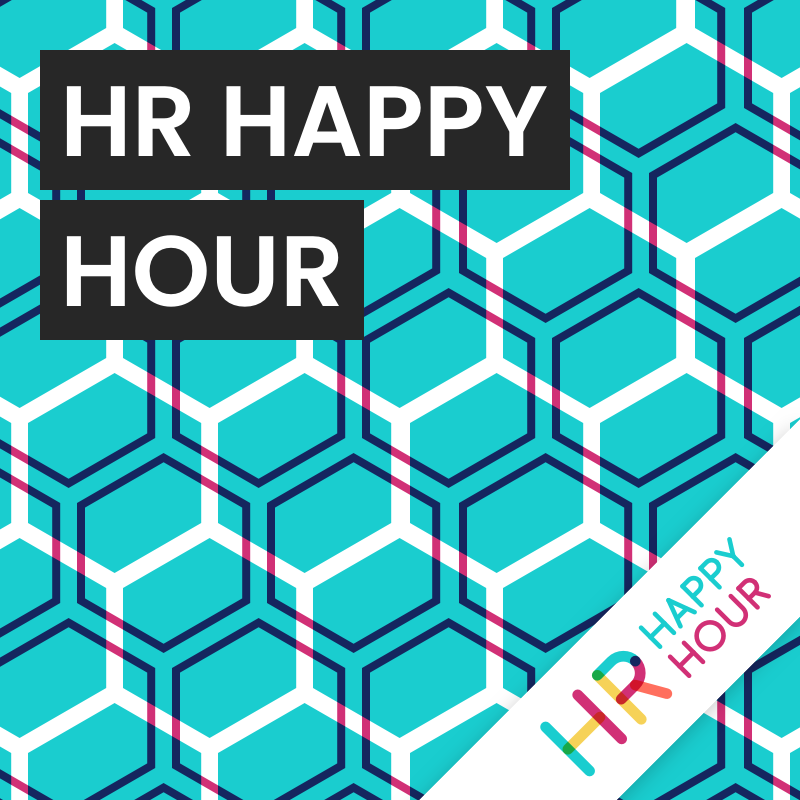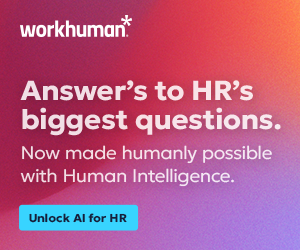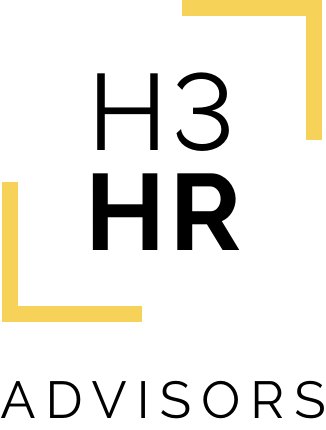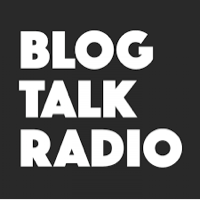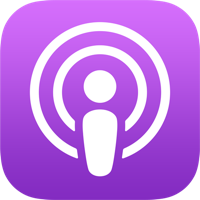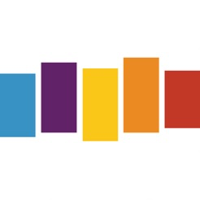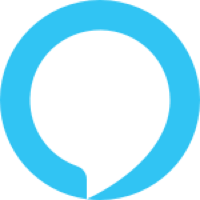HR Happy Hour 481 – Human Capital Trends for 2021
Hosted by

Steve Boese
Co-Founder and Chief Data Officer of H3 HR Advisors and Program Chair, HR Technology Conference

Trish Steed
Co- Founder and Chief Strategy Officer, H3 HR Advisors
About this episode
This week we were joined by Chris Havrilla from Deloitte Consulting to discuss some of the key findings and themes from the Deloitte Human Capital Trends Report for 2021. The data from the report showed some of the dramatic changes in work and in re-imagining work due to the effects of the pandemic. Chris also discussed the importance of not just implemening new HCM technology for its own sake – organizations today need to truly change the nature of work and workplaces in order to meet the challenges ahead. Finally, Chris shared some thoughts on a new trend in HCM technology – the idea of talent/opportunity marketplaces.
We also discussed our favorite cocktails! This was a fun show, please remember to subscribe to the HR Happy Hour Show wherever you get your podcasts.
Transcript follows:
Steve 0:00
Welcome to the HR Happy Hour Show with Steve and Trish. Trish, it is a Friday as we record this, which is great. And you can tell what I’m thinking about already, even though it’s early in the morning, Trish, if your character if you say if you were a cocktail Trish, which cocktail would you be?
Trish 0:18
Oh my goodness. These are very challenging questions on a Friday morning. This early in the morning. Okay, if I were a cocktail, you know, I think I would be a Manhattan.
Steve 0:30
Nice.
Trish 0:31
You know, a little saucy. Little tiny bit sweet. Yeah, I think I’d be a Manhattan. What about you? Whatwould you be?
Steve 0:39
Oh, easy Trish, Old Fashioned. That’s it. Both from a cocktail perspective and a lifestyle perspective.
Trish 0:47
You know, that’s so true. I’m much more cosmopolitan than you are. I think. Yeah. Coming from the Midwest, right?
Steve 0:55
Yeah, it’s a story for another show. The pandemic has like affected me.
Oh, my goodness.
Trish 1:00
That’s a topic. I feel like my answer was bad.
Steve 1:02
The years of pandemic, I’ll be fine. I don’t have to go anywhere.
Trish 1:05
I got it. I got it. Well, listen, hey, when our guest comes on, we’re gonna have to ask her and see.
Steve 1:10
She has a chance to think about her answer to so it’s gonna be a fun show. Trish, we have an old friend of ours coming on the show. Talk about human capital, human capital technology, someone who shockingly has never been on the show before we just learned but before we welcome her Trish, we must thank our friends at Paychex. One of the leading providers of HR payroll, retirement and Insurance Solutions for businesses of all sizes. With the onset of COVID-19, Paychex quickly responded to support businesses and help them manage the new challenges brought on by the pandemic. The Paychex COVID-19 help center is the ultimate comprehensive resource hub featuring articles, videos, scenario tools, live webinars and podcasts that provide valuable and up to date insight on stimulus measures, managing remote or hybrid workforce, travel restrictions, state specific guidance and much more. To access this valuable information, go to payx.me. That’s pa y x.me slash Help Center. Today. It’s good stuff there, Trish. I’ve checked it out recently, and they do a great job of keeping that up to date.
Trish 2:15
They do I’ve actually looked as well. And you know what I was thinking today, just this morning, as I was getting ready for the show. I was listening to NPR and they were talking about how schools are starting to consider not making kids come back next year, and that they will have a hybrid choice as well. And my first thought actually was I wonder if any of the material that Paychex has compiled will actually help people who are in school roles, making those decisions as well. Because again, much like a workplace, having a hybrid school situation, I think would be pretty similar to bringing kids back. So anyway, I will be checking that out and seeing if there’s anything applicable.
Steve 2:53
Cool, good stuff. All right. Let’s get on with the show, Trish. Our guest today, longtime friend, first time guest, Chris Havrilla, she leads the human capital technology and solution provider strategy advisory research and sensing practices for Deloitte Consulting. She helps to demystify the ever changing HR tech landscape for both organizations and solution providers. She has been named an Analytica top 25 Global consultancies influencer across all C suite topic categories, as well as AI, emerging tech and future of work subcategories. And it’s also a Human Resource Executive top 100 HR Tech Influencer. Chris, welcome to the show. How are you today?
Chris Havrilla 3:35
I am incredible. Thank you. I’m so excited to be here. Finally, this is it.
Steve 3:41
Yeah.
Chris Havrilla 3:42
Check.
Trish 3:42
You’ve made it.
Chris Havrilla 3:43
I have made it. My work is done here.
Steve 3:47
Nice. All right. Well, let’s have you take on the question of the day before we get into some of our human capital conversation. You have a cocktail, Havrilla?
Chris Havrilla 3:57
I do. Goodness, thank goodness, I had a minute to think about it. Because this is what this was me when Trish was going or you know, thinking about it. I was like, don’t say Manhattan. Don’t say Manhattan. I’m gonna go a French 75.
Steve 4:15
Oh, that’s
Chris Havrilla 4:17
kind of classic, refreshing, bubbly.
Steve 4:22
That’s a good one.
Trish 4:23
At least she didn’t say classic and bougie and ratchet.
Steve 4:27
I actually, we were on one of the Work Break shows Trish, I made a French 75 on one of the Friday shows some months back.
Trish 4:35
I remember that. That’s a that’s a great one. We need to start keeping track Steve, this should maybe it is the Happy Hour. Maybe that’s our new thing. We ask every person that in addition to whatever question and we need a list, we need a list of like, you know what the recipe is? Maybe that’s it when we post the show the recipe gets posted for their drink.
Chris Havrilla 4:54
Oh, I love it.
Steve 4:55
Not a bad idea.
Trish 4:56
Like that? Just came up with that on the fly. How’s that?
Steve 4:58
All right. Well, we’ll save that for our other podcasts cocktails today, but this is the HR Happy Hour Show, we want to talk about HR, human capital, HR Tech. Chris, let’s start with this. We have over the years had always done an annual show with someone from Deloitte, when the human capital trends report would come out every year, because it’s such a comprehensive report, it’s always interesting. It’s thought provoking, and kind of I’ve always called it essential reading. And I do believe it still is, for folks in this space. Maybe we’ll start there. Is there anything that stuck out to you once that data and that report came together? And how does that reflect what you’ve been working on some of your research work yourself that you’re doing?
Chris Havrilla 5:40
Absolutely, you know, first and foremost, so something a little different about trends this year, we have two. So we, we will come out with part two. Okay. Yeah. In June, so it’s, you know, and I think it was especially fascinating this year, because, you know, of COVID. And so we took a deeper look at everything from 2020. And, and Dove deeper. So the thing that’s great about trends, though, is, it is is pretty informative for my own work. Right. So I you know, I kind of laughingly describe trends as the Oh my god, what, right? It’s like the attention getter, right, and it tells us kind of where people’s awareness is. And then that huge kind of gap between awareness and readiness. And, you know, we spend a lot of our time in research and sensing kind of diving deeper, and kind of Okay, now what, right, um, and so, this year is no, no different.
But the thing that stood out to me the most this year, it was it was the first time and I don’t know, 11 years that the business executives outweighed the HR executives in our respondents, kind of 56% to 44%. So that was huge. I think it really underscored like how prevalent human capital issues were, for the C suite, you know, especially after the this last year. The other part of it was the stark difference, like the complete huge jumps in some of the numbers, post pandemic, right. And I think the one that really stood out to me, probably the most was prior to COVID-19. You know, executives were kind of, I would say, pretty mixed, right? on their preparedness for, you know, kind of the constant disruptions, you know, what’s our preparedness strategy, and it was pretty evenly divided between none, or kind of a, you know, maybe a focus on likely or incremental type events. And then, and then also, to some degree, the, the focus on multiple scenarios. So it’s pretty evenly divided with a very, very small portion saying, we’ll be focusing on highly on, you know, unlikely events, right, I just think that was a focus, and you saw that jump tremendously.
The other side of it was how much people were looking at work itself. And, you know, we had prior to the pandemic, you know, probably, you know, again, maybe a pretty even split amongst optimizing work, redesigning work and reimagining work that went completely, like, literally 97% moved into that, you know, optimizing redesigning and reimagining work, like it flipped, and reimagining work, which is way kind of far off in the spectrum, where it was, like 29% of executives believing real, you know, reimagination of work would be critical to future success was like 29%. Post, the pandemic jumped to 61%. So is huge. And, and the work part for me, has been a huge focus because as the tech person, right, tech really should, in my mind, and not always in practice, but should be the thing that really helps us work completely different. How we work, how work gets done, should change. The reality is most people kind of lift and shift, right and move from one tech to the other, bring another piece of tech in, but they don’t actually work differently. So it really inspired for me this year, what the what I’ll be focusing on the most, and that is this notion of re architecting work, which re architecting is really just a practice of reimagining work. So how now what what do we actually do? And and so for me, that’s, that’ll be the focus of my work for this year.
Trish 10:09
Yeah, that’s fascinating. Thanks for also just kind of talking about the sort of the drastic flips there. Because those are things that you’re right, we’ve we’ve sort of pushed for leaders to think about over the past decade or so maybe longer. And now when something big happens, then you finally see them like, Oh, we probably do need to pay attention to sort of this future of work idea that’s now suddenly here. So also, just one other comment, I really love how you talk about the gap between awareness and readiness, because while I think that that’s been something that business leaders have struggled with, for many years, this has been the year this past year has been a year where we’ve all been sort of hit in the face with it, if you will. And, you know, we know now we have to be ready, right? Be ready for those disruptions.
Chris Havrilla 10:58
Constant,right? I mean, literally, constant perpetual disruption, and it isn’t about transformation so much anymore. It’s like, how do we absorb all this? and react? Right,
Trish 11:10
Right, exactly. One question for you came to mind, as you’re talking about sort of your focus, you know, going forward on this rearchitecting work? Do you talk to or think much about sort of the younger generation coming up into the workforce? Or does Deloitte focus on that at all? I’m not sure in the report, if it’s more just focused on the business leaders answering or is there any thought to sort of thinking about young people who might be going through these disruptions, whether it be in high school or college, and, and their vision of what rearchitecting work might need to be? Or is that still a little bit early?
Chris Havrilla 11:46
You know, we do do studies, you know, millennial, Gen Z, you know, but but for human capital, no, we focus mostly, you know, on business leaders. Now, that doesn’t mean, you know, we do get a pretty heavy cross section, but it’s, you know, it really is, when you think about the notion of work, it really has to be structured in a way that keeps them in mind. Right keeps, I mean, we’ve five generations in the workforce right now, right. And a lot of the data that we see that we studied, is, you know, the kid, kind of really want a lot of the same things, right? Um, you know, when we studied well being, you know, we didn’t study it in it, or even belonging, you know, so much from generational side, because we had insane amount of consensus, that, I mean, like things that we’ve never even seen before around belonging, and well being and things like that. And everything kept coming down to how connected people were to the work to their teams, you know, how well they collaborated together. You know, this notion of wellbeing we’ve done all this, you know, spent literally millions and millions of dollars on wellness programs. And not enough around the actual work redesign, which was the biggest connect that we saw when it comes to work.
People want to be connected to their work, they want to make an impact. They want to know this work is, you know, like, what are we doing? Why are we doing it? Right? And it really comes into play with this notion of re architecting work, because this isn’t about process, right? This is about it is not about output. It’s not about activities anymore. It’s not about any of that it’s, and I think the pandemic really, really brought that to light, right? It was, who cares about how, you know, what do we need to do? When do we need to do it? Why do we need to do it connect people to the work? Those are outcomes, not output? We can’t see people doing the work, we can’t see people, you know, to check the box. We know they’re working, because we can see it. Right? We connected them to the work. And we saw productivity go up, right? But how do you maintain that? How do you maintain that when everybody now just wants to kind of go back to normal? And how we maintain that is looking at work in a very different way. And that’s about outcomes. So it’s not, you know, process steps, which we’re working anyway, by the way, anybody who’s actually watched a process flow, like, oh, here’s my process map. That’s not what’s happening out there. You know, so this is really about flow. And it’s about how do we arm people with the information, they need the tools they need to get the outcomes, how do we connect them to that and hold people accountable to outcomes, that output, right? And so this spans generations, right? People want to believe in what they do. And they want another making an impact, and they want some modicum of control over what they do. And when they have it. It soars.
Steve 14:59
Chris, I want to ask you about technology in this way. So I’ve thought this for a long time. And I’ve been doing this for a while, as we all have right around enterprise technology. And one of the things I’ve I’ve theorized and I believe it’s true is that especially at the high end, the enterprise technologies that that are sort of available right in the HCM space, tend to just converge over time. They’re not that different. They’re all a little bit different. But they all at the end of the day, they’re fairly similar, right? When Company A adopts something, Company B, C, and D adopt it as well,
Chris Havrilla 15:32
Very quick.
Steve 15:33
Yeah, they do. I mean, that makes sense. I get what that does, they react to the market a little bit. And these technologies are also available, right? Especially to the larger companies, right? The fortune 1000 companies, they could choose any one of them that they want, right? And so could their competitors here. That’s the point I’m trying to make, right? So it comes down to, in my opinion, are not a differentiator, to the organizations who, who implement them. Right, not on their surface. So I guess my question is, how do organizations actually drive significant impact or maybe competitive differentiation? When all of their competitors have access to the same tools they do? If that makes sense? What did the smart organizations do to actually increase the value that they get out of their HCM technologies?
Chris Havrilla 16:18
I mean, it really comes down to how they use it, right? I mean, like, I can give you the best, most expensive hammer in the world, I can give you, you know, the cheap hammer. But if you don’t know how to use it, if you don’t know that it takes two hits of a hammer to get a nail in, you know what I mean? It doesn’t. The Smart organizations learn how to wield the tool, you know, tools don’t solve problems, people solve problems, right, with tools in hand. And so I think it’s the application, the use of technology, and it kind of goes back to what I referred to earlier, most people and we found this in the high impact tech strategy work that we did. You know, that Erin Spencer and I worked on, but very few people actually have a strategy. Very few organizations actually know everything they have. And, you know, and again, when they bring tools and technology in, that don’t necessarily change how they fundamentally work, right? They are still doing the same processes, they’re still kind of doing it. So the, you know, the best, you know, most impactful organizations are really looking at the work when they bring that technology in. Right.
And so, and I write a lot about this in, you know, around that notion of super teams that we started writing about in 2020 trends, right, you know, we I know, personally, you know, I’ve been taught kind of talking about tech, as part of the talent equation for a really long time. Right? Like, you know, how do we, how do they, how does it assist us? Right? If I’m going to hire an assistant, you know, how can I How can I use it? So how do we bring technology onto the team, not in that kind of substitution mentality where, you know, people kind of got brought in, because we want to substitute or move around work? How do we save costs? Right, you know, how do we reduce headcount? You know, it was all about substitution. And then we started seeing with cognitive technologies coming and things like that, maybe we can augment people, right, make them a little bit more productive? How can we squeeze a little bit more lemon juice out of this lemon? Right. But you know, it’s still, you know, I think when we get to something super impactful, right? We’re looking at it as a collaborator on the team, right? Like, how can I use your strengths? How can I use your strengths, right? And we know a lot of this technology now can call through data, see trends, see things, see blind spots, see things we haven’t seen? So I think, you know, going back to that notion of flow, right? If we’re, if we’re move away from kind of the input process, output world that we’ve always lived in, right, and start thinking of, what’s the question I’m trying to answer? What’s the outcome I’m trying to get? Right? Like, even if it’s crazy, like what, what, what do I want? And then what’s in between, is what we need to make action and take or take action to make decisions. And I think that’s the differentiator, we see high performing organizations, five times more likely to leverage new technologies to augment human skills and capabilities. They’re the ones that are really rethinking how we work and how work gets done. And I think that lens of how are we making work better for people and people better at work is the one we have to put on when we’re looking at technology, how we apply it.
Trish 19:51
Yeah, I agree with that. I think she was you were talking I’m sitting there picturing. So much of this isn’t really about the technology itself. It’s about the communication between the leaders in the organization and whether or not they are all working toward an outcome model, or if they’re still back in the process, weeds that they’ve been in for a while. We, the hammer example is great, because I was thinking to sort of when you said no, that sort of the technology and the tools you have, because I think too, sometimes we, we hear of leaders who either read about trends or hear about things that are possible, and they’re, they’re going back to their teams expecting those outcomes, but yet, they don’t know if the technology they have in place can actually achieve those, or even give them those kinds of analysis and recommendations. They they might or they might not. So I sort of think of is like even know the know the type of hammer you have. Right? You may think you have a sledge hammer, and you really don’t you have a regular hammer, that’s going to take a lot more work to get to those outcomes. So
Chris Havrilla 20:52
What are you trying to do and when strategy? And what we found was most people’s strategy was implementation. Right? You know, we get this.
Steve 21:01
And then Chris, we were talking about organization lacking a strategy, I was going to say like, the strategy can’t be implemented a new ETS strategy, right? That’s a project but that’s not
Chris Havrilla 21:15
Right. So you know, I mean, and in that notion of flow, that’s where it should be right is, you know, okay, what are my outcomes? What’s the question, trigger, event? Whatever, right? What are the outcomes I’m trying to get? And what decisions do I have to make, and we have a problem making decisions in organizations, it is a muscle set, we have all his data, all his analytics, you know, all of these things. Yet, what
Trish 21:41
This makes me wonder, Chris, though, sorry to interrupt, but I feel like, and I don’t know if I’ve really thought of it this way before. But you know, if I’m a CEO, 10 years ago, yeah, we had this data, but I didn’t, I wasn’t really pushed to necessarily have a strategy. And now all of a sudden, I mean, I wonder, are you seeing that at all? Sort of like, I don’t wanna say panic among the CEOs. But will this will this ability to have technology give you and serve up all of the data in this different way? Will this really push maybe some of those CEOs that are kind of average to below average, when it comes to running a company? Well, this may be bring them to light a little bit, because I think as the technology gets better, as your HR teams get smarter, about seeing what’s really going on, what outcomes are really going on in an organization, is that going to out? The CEO or other C suite leaders?
Chris Havrilla 22:38
You know, it’s it’s, I love the question, because, you know, I do think, as we have looked at even this notion of transformation, incremental change has been the name of the game, right, which keep status quo. I mean, nobody says it, right. We all say we want transformation, we all say we want big stuff. But, you know, if we’re just if we’re agile enough, where, you know, we’re golden. What has happened, though, with all of this perpetual disruption all the time, is that, you know, transformation, like, it’s not even really the topic anymore. Like it’s more about absorption, right? And who can do this? You know, who can do it fast? You know, who can do it at scale? Right? Who could, you know, like, how, how do you absorb all this change? Right? And, and, and really, truly, actually be agile, right? And, and, again, that kind of falls in how to use these tools, how to use the insights out of you, you know, act appropriately, you know, how do you act in the best way to remain agile, the average shelf life and you know, I’ve talked about this average shelf life skill, it’s like 18 to 36 months right now, right? Competing business models and threats all the time, you’ve got all this stuff. It’s, it’s not a matter of, you know, if it’s, you got some matter of when, right? Who absorbs this best, and who can be, you know, who can do it kind of speed at scale and in with the insights to make good decisions, right. So,
Steve 24:16
One more thing for me, Chris, I wanted to ask about I saw in in your notes, and it speaks a little bit to the this idea of agility, right in organizations being able to adapt much faster to changing conditions, and interact with resources, talent in different ways. And I’ve seen a ton of this, right. Last year when I was doing top HR products of the year demos all summer long. I saw several examples of this, and it’s on talent and opportunity marketplaces. And you guys have some research on that, which I don’t think I’ve seen anyone actually dig into it. I’ve seen a bunch of them myself, but I didn’t, I didn’t actually share that information with anybody, quite frankly, kept it to myself. But I look I’d love for you to talk a little bit about what you’re seeing there why and why it matters. And for folks who maybe haven’t started, folks listening to this show haven’t really started getting into this concept of a talent marketplace, or an opportunity marketplace, whatever word you’re calling it. Every vendor call something different,
Chris Havrilla 24:56
everybody,
Steve 25:02
why is it important to be thinking about
Chris Havrilla 25:16
different, different terminology, but it’s, you know, it’s, it’s kind of funny, um, you know, I haven’t seen anybody look at the space comprehensively. And so when we did this, you know, we were doing it for that reason, because we had a host of, you know, internally and externally, people, you know, wanting to talk about this, but we, we started looking at it really closely in 2019. In trends, right, because, you know, we really could tell from our data that, you know, if you’re going to win the war for talent, it was kind of going to be on the homefront, right. And so, and how flawed, the, you know, kind of how we look at mobility, right? was already right, and it wasn’t, it was less about system and much more systemic issues, managers, blocking people, you know, trying to hold on to talent, you know, we’re capping people’s, you know, wages, right, you know, I can move you to this position, but I can only give you a 5% raise, you know, it was harder to find a job, you know, in a company than it was to, you know, to do it outside, right. And so, we started looking at this notion of marketplaces early on, and following some really interesting, you know, interesting trends that we were seeing.
And so we started doing a really, like, big look at the landscape of technology. And I’m gonna tell you something, you know, there is a ton of innovation in this space, right, but not a lot of readiness yet at the organizational level, to absorb it, they’re really just thinking about it in terms of internal talent, mobility, right? And kind of this, you know, worker progression and Career Mobility and things like that, how do we hold on to our talent, you know, that have the tribal knowledge. But we started realizing that the marketplace was really kind of being covered in three different ways across the technology, certainly internal mobility, but also this notion of developmental, right and giving us workers like an opportunity to develop skills and capabilities and, and things like that. And then, you know, even further to that, this notion of maybe a brokerage, right, so internal or external, but right now, most organizations are still just kind of looking at this from a, a pure internal talent mobility perspective. But I definitely think that what we’re seeing with the technology, like if organizations are really eye opening to looking at this notion of we have work that needs to be done outcomes, right. And we need to be able to access the skills and capabilities to get that work done. Right, we have to look at it across the the talent spectrum, again, machines as collaborators, you know, the whole alternative workforce, you know, how do we tap into all of this talent, right to do the work, but there’s also a mindset shift that has to happen at the worker level, too.
And that is, I’m not going up a career ladder anymore. I’m not doing you know, I’m accessing experiences, right? Because, again, that shelf life of a skill thing is real. And we know people that are struggling to you know, they’re looking for work, but they don’t know how to translate what’s their inherently human capabilities into other ways so that they can truly learn in the flow of work, but with skill stuff, like have the skill being so low, right? Like, what how am I accessing learning constantly? How am I accessing experiences constantly, that I can apply to other things? And because you can’t re skill at scale, everybody’s talking about rescaling every skilled scale when the shelf life is that small. So anyway, I think that’s why this notion of a marketplace, how it will end up playing out down the road is interesting. But there are three ways to look at it. Right. And internal mobility is just scratching the surface. So it’s a really interesting study. Um, and I’ll give you guys links.
Steve 29:35
And, yeah, we’ll post that in the show notes. I’m fascinated by it, because I’m waiting to see how it evolves as well, because what most of what I saw last summer was good, but it was still just getting to the beginning stages of it. So if you were a manager, say in an organization and you needed someone to work on your project for for two weeks, for 10 hours a week to do with XYZ skill, and you could post that opportunity and other folks in the organization could bid for it. But what? or submit for it, but there wasn’t yet I didn’t see this anyway, a way for that manager to look at alternative sources of filling that need, which might have been Fiverr, or some gig marketplace or technology itself. You know, there’s a technology that thing you need done. We don’t need any person to do it. So I think maybe that’s where it’s heading. But super interesting, guys. Yeah,
Chris Havrilla 30:25
there’s looking fascinating tech out there right now, and but it is gonna be all about how people apply it, you know? Yeah, like, mindset wise, it’s gonna have to be a shift.
Steve 30:35
Yeah. All right. Well, Chris is really good stuff, we will get some links in the show notes. So folks should definitely read the human capital trends report every year. I read it every year. I love it. We got to talk about it a little bit, as well as the talent, opportunity marketplace stuff you guys are doing as well as anything else. Chris, is there anything else? Maybe you want to tease say in the balance of 2021? It might be interesting, or maybe it’s just an idea. You have a plan? I’m thinking about this? I’m not quite maybe done it yet. But um, maybe the second part of the year, I want to, I’m gonna be spending some time on this. What might be down the road? From your perspective?
Chris Havrilla 31:12
Yeah, I mean, it is truly this notion of rearchitecting work. That’s the study I’m doing right now. The other one is, you know, we’re doing a high impact another one of our high impact. studies on culture change. And, you know, I’ve always been this kind of believer that, okay, you want to change your culture, blow up your leadership team and change your talent model. And there you go, right. It’s not something that’s so easy, but I’m going to take an angle on this study, it’s not my study, but I’m going to take an angle in it on the impact of AI, like if we’re actually going to bring technology onto the team that will change the culture, like because we are going to work differently, or should be. And so this new culture in this kind of notion of how bringing AI onto the team will change your culture. And, you know, are you going to be in the driver’s seat of that? Or are you going to just kind of that’s it.
Steve 32:07
So good stuff.
Chris Havrilla 32:09
I’ll send all that to you.
Steve 32:10
All right, awesome. Well, we look forward to having you back on maybe when that comes out. When that research is out? Yeah, it’s been, we’ve known you forever. Are you first time, longtime listener, first time guest, you know, after 12 years of the show, which is, I guess my fault.
Chris Havrilla 32:25
If you want to tear it up on talent opportunity marketplaces, I’ll bring the findings of the data, like it’s, like, part of this is like any other kind of new way of thinking, pulling organizations through is going to be half the battle. There’s some incredible tech out there, you know, but it’s would people use it?
Steve 32:43
Yeah. There’s a whole nother show you can do about, you know, from the from the technology provider perspective of how far ahead of your customers should you be, versus can you afford play?
Chris Havrilla 32:54
I have a whole chart on the outpacing of technology and HR. You know, it’s like, how do you keep up but that’s a little bit of this notion of absorption that we’re talking about.
Steve 33:05
I remember working on something years ago, that was so innovative, so cool. So cutting edge, and we couldn’t even give it away, much less sell it, couldn’t give it away. Like get people to try and use it because we were there mind space, which is not there. It was
Chris Havrilla 33:19
there. Yeah, exactly.
Steve 33:21
All right. We’ll let you go. We we’ll have this second part of the conversation for another show. Otherwise, we’ll be here.
Trish 33:28
Chris, thanks for coming on. Yeah, this was wonderful. And thanks for the insights that that the HR professionals out there can be thinking about as they head into the second half of the year already, right.
Steve 33:40
Yeah. Good good stuff.
Chris Havrilla 33:41
Exactly.
Steve 33:42
All right. Thank you Chris, thank you Trish, thanks to our friends at Paychex. Of course, of course, for all their support. Good stuff Trish. We will see you next time on the HR Happy Hour Show for Trish Steed, for Chris Havrilla, my name is Steve Boese. Remember to subscribe. Bye for now.
Transcribed by https://otter.ai
Talk to us
If you want to know more about any aspect of HR Happy Hour Media Network, or if you want to find out more about a show topic, then get in touch.

